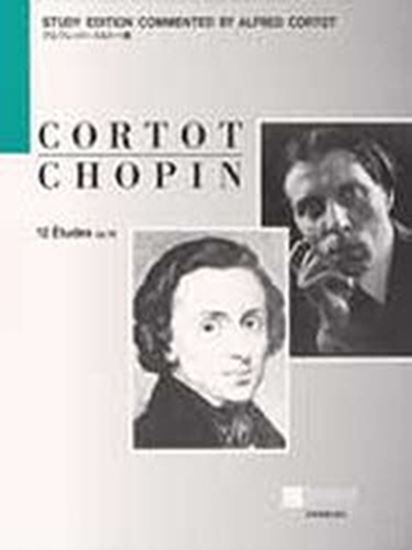Chopin, Frederic : 12 études Etude No.2 a-moll Op.10-2
Work Overview
Genre:etude
Total Playing Time:1 min 40 sec
Copyright:Public Domain
Commentary (2)
Author : Imazeki, Shiori
Last Updated: August 7, 2019
[Open]
Author : Imazeki, Shiori
A minor. 4/4 time, Allegro.
Composed in November 1830.
Autograph manuscripts are extant at the Fryderyk Chopin Museum in Warsaw (M/191) and the Stiftelsen Musikkulturens Främjande (Foundation for Musical Culture Promotion) in Stockholm.
As mentioned in the commentary for No. 1, this work was composed as a pair with No. 1.
The challenge lies in smoothly playing the chromatic scale by tucking the 3rd, 4th, and 5th fingers of the right hand, while simultaneously articulating the inner voice on the beat with the 1st, 2nd (and occasionally 3rd) fingers. Moscheles' Op. 70, No. 3 (G major) also presents the challenge of playing chromatic scales in the right hand, with the 1st, 2nd, and 3rd fingers being the focus of training. In contrast, Chopin's present work aims to strengthen the weaker fingers for striking, and demands even more delicate control as the relatively stronger thumb and other fingers are responsible for the inner voice in sixteenth notes. The left hand consists of staccato eighth-note bass single notes and triads, providing harmonic support.
It is in ternary form: A (mm. 1–18) – B (mm. 19–35) – A (mm. 36–49). Section B temporarily destabilizes the tonality due to the frequent appearance of borrowed chords. However, from measure 32, the dominant of A minor (E) is sounded in the bass, leading to the return of the tonic A minor simultaneously with the opening motif of section A.
Author : Ooi, Kazurou
Last Updated: March 12, 2018
[Open]
Author : Ooi, Kazurou
No. 2 in A minor
This is one of the most difficult etudes. Putting musicality aside, one cannot proceed unless the fingers are responsive. The author has never played this etude but has taught it. Here, I will share some practice tips, so please try them.
Let's take measure 29 as an example. First, try playing only the sixteenth-note scale without the chords, using the same fingerings as when the chords are present.
If problems arise in playing the scale at this point, it is, of course, almost impossible to play it with the chords. First, practice playing the scale using only fingers 5, 4, and 3.
Practice forte, putting strength into each note. Once you can play the scale with fingers 3, 4, and 5 firmly on the keyboard, proceed to the next exercise. Again, let's take measure 29 as an example. First, create groups of three notes. The first group consists of A and A-flat on the off-beat of beat 1, and G on the downbeat of beat 2. Of course, this G has B and E-flat below it, which should also be played together. Then, create the following loop:
A, A-flat, G, A-flat, A, A-flat, G, A-flat, A, A-flat, G, A-flat, etc. Including the two notes below G, ascend and descend these groups of three notes according to the fingerings. Once you get used to it, move on to the next group.
Next, the three notes are F and E on the off-beat of beat 2, and E-flat on the downbeat of beat 3. Of course, include the chord below E-flat. Then, create a loop and practice: F, E, E-flat, E, F, E, E-flat, E, F, E, E-flat, E. After that, try practicing in the same manner. When the author practiced measure 29 using this method, the D-flat, C, B occurring from the off-beat of beat 3 to beat 4 was the most challenging. The reason is simple: the two notes below this B are far apart, making the chord difficult to grasp. Please practice the groups you find particularly difficult extensively.
PTNA & Partner Channel Videos(14items) View More
- favorite_border
- 2
Recording Date: 2020/8/3
Recording Location: 上野学園石橋メモリアルホール(2020年ピティナ・ピアノコンペティション 特級 二次予選)
- favorite_border
- 3
Recording Date: 2024/8/17
Recording Location: 東京音楽大学 TCMホール(2024年ピティナ・ピアノコンペティション Jr.G級全国決勝大会)
Sheet Music
Scores List (15)

(株)全音楽譜出版社

(株)全音楽譜出版社

(株)全音楽譜出版社

(株)全音楽譜出版社

ヘンレー

ヘンレー

ヘンレー

ジェスク音楽文化振興会

(株)全音楽譜出版社

ヘンレー

ポーランド音楽出版社

(株)ヤマハミュージックエンタテインメントホールディングス

ロケットミュージック

(株)音楽之友社


















